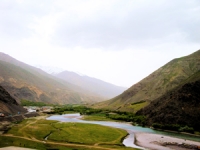Water sharing between Central Asian countries has been conflicting for quite a long time already.
The Water-Energy Nexus in the Amu Darya River Basin: The Need for Sustainable Solutions to a Regional Problem
The Amu Darya River is the only source of water for the four countries and regions through which it passes: Tajikistan, northern Afghanistan, Turkmenistan, and Uzbekistan. In
recent decades, the expansion of agriculture has put extreme strain on the surface waters and groundwater reserves. If planned expansion of agriculture continues, the Amu Darya River Basin is at risk of extreme drought, resulting in both economic and human crises. This crisis of resources is closely linked to the energy crisis in which millions of people in the Amu Darya River Basin do not have access to clean and reliable electricity. This is called the water-energy nexus. In order to ensure its survival as a region in the face of climate change and economic growth, cooperation between these four states is urgent. I suggest that Afghanistan and the three Central Asian Republics do as follows: Restructure the BVO; Create a better financial system for water and energy exchanges; Improve the efficiency of irrigation; Diversify the agriculture sector; Invest in renewable energy; and Create local education programs to involve farmers in both the scientific and policymaking processes.





